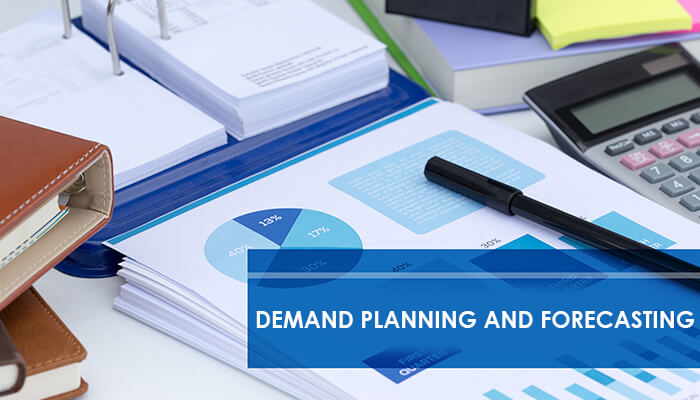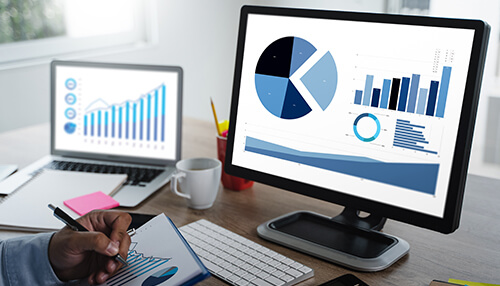Demand planning and forecasting are usually the most important activities in any supply chain. They can help you reduce inventory levels, avoid excess capacity and better manage your inventory. But it’s not always easy to get it right.
To optimize demand planning and forecasting, you need to understand the different methods available to you and how they apply to your business. You also need to have a clear understanding of the risks associated with each method, so that you can choose one that fits your needs best.
To succeed in these areas, you need to have an effective demand planning and forecasting process in place. You also need to develop a clear understanding of what makes demand planning and forecasting successful so that you can improve it.
Here are ten ways to optimize demand planning and forecasting:
1. Use a forecasting model that accounts for seasonality and other factors
The demand planning process is the first step in your supply chain, and it’s important to get it right from the start. This can help you avoid costly mistakes and guesswork later on, when you have much more information available to you.
2. Analyze historical data
To improve accuracy of your demand planning and forecasting model, you should look at historical data from previous years to see how well your assumptions were correct. This will mean having access to accurate historical data from previous years such as sales figures and purchase orders (POs). You may even find that you need to make changes in your forecasting model based on these findings!
3. Identify the right level of detail for your data collection efforts
The first step is to identify the right level of detail for your data collection efforts. If you are just starting out with demand planning and forecasting, it’s best not to get too granular in your forecast data collection activities. Instead, focus on gathering information at a higher level of specificity — such as overall demand trends or seasonal patterns. This will help you understand how your business operates and what are the most important factors that affect it.
4. Select a timeline for analyzing your data
Next, select a timeline for analyzing your data — whether it should be monthly or quarterly. In case of seasonal demand planning or forecasting, you can take into account events such as holidays or seasonality within a month’s time frame (for example, October sales). But if you have an annual plan in place, you may want to analyze data on a quarterly basis so that you can track long-term trends within each quarter. Use predictive analytics when possible
5. Forecast-driven planning
Forecast-driven planning is based on historical data that is used to predict future demand for products. This type of process relies on past performance to determine which products will sell well next year, as well as their sales volumes, price points and profit margins. Forecast-driven planning also considers seasonal trends, new product introductions and changes in consumer behavior.
6. Analysis-driven planning
Analysis-driven planning is based on internal market research and marketing studies rather than historical data from previous years or seasons. In this case, you analyze your current customers’ needs by using surveys and focus groups to determine what they want from your business over time.
7. Improve forecasting accuracy
The most important thing you can do to improve demand planning and forecasting accuracy is to use the right data in the first place. This means that you need to have a good understanding of your customers and their needs, and what makes them buy what they buy. If you don’t know this, then it’s going to be hard for you to make accurate forecasts about them in the first place!
8. Use business intelligence tools
There are plenty of different tools available for predicting demand, but many of them are expensive or difficult to use (e.g., Excel). Instead, we recommend using business intelligence tools like Salesforce or Google Analytics — these will give you all of the information you need without costing you a fortune (and they’re easy enough for anyone in your organization to use). You can use these tools alongside some basic forecasting techniques like ARIMA models or seasonality analysis, providing a powerful combination that will help you make more accurate forecasts over time.
9. Focus on improving forecasting accuracy
As with demand planning, there are many factors that impact the accuracy of your forecasting process. You can improve this by:
Building a stronger relationship between your organization’s supply chain experts and customers through regular meetings or social media interactions (e.g., Facebook Live). This helps ensure that your suppliers have a better understanding of your customers’ needs so they can better predict future trends in their specific industry or market segment.
10. Develop an inventory management plan
Develop an inventory management plan this includes establishing ideal levels of inventory, as well as setting up a system that ensures that inventory levels are appropriately managed throughout the year.
Understand how your products are manufactured and what processes are involved in making them, so you can plan ahead for demand fluctuations.
You’ll need to identify how you’re going to get this information into your system in order for it to be useful for planning purposes.
This can include using multiple sources of data such as sales orders, shipping documents and internal reports from each department across the company.




